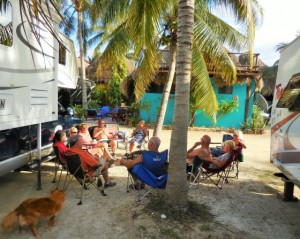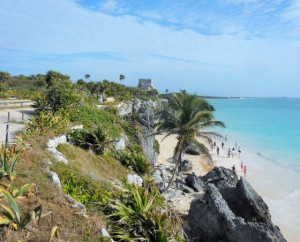
February 11, 2016 – Our four days in Cancun were interesting, with some shopping, site seeing, eating out and more. On our arrival it was hot and humid, not so good for sleeping, better for drinking cold beverages. That did not last long and before you knew it we had clouds, rain and highs in the mid-20s C 70s F). The Mecoloco campground was across the road from the ocean but no access to the beach. However here was access about a block away. Given the unsettled weather no one was that interested in water sports or hanging at the beach. Our first full day we did an excursion to the Hotel Zone located on a strip of land, originally an island with 3 residents, ocean on one side, large lagoon (yes full of crocodiles) on the other. There are actually two Cancuns. Mexico tourism thru FONATUR (National Fund for Tourism Development) started the tourist Cancun in the early 1970s and soon after the City of Cancun to support the tourist zone. Today Ciudad Cancun is over 500,000 people and the Hotel Zone connected at both ends can accommodate more than 100,000 occupants on any day. Our drive thru the Hotel Zone included a stop at the tourist market which including very intense sales by the vendors. Happily I was successful in getting a sticker and a tank top at a reasonable price.
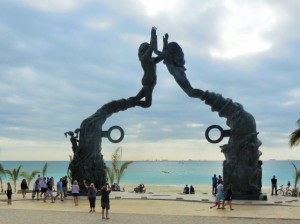
The next couple of days we went in the town to the regular market area, much more relaxed, better prices and no pushy sales people. We had lunch, looked around, some did some banking and made a few purchases. We also found laundry services (12 pesos per kilo) close by and an Agua Purificada (water station) where we refill all our empty bottles. Rafael and Anita were also in need of a dentist and we also got that taken care of, also just down the road, how handy is that eh. In the mean time we did manage to have a couple of Happy Hours, not that we needed any special event to make us happy, lounging in the tropics usually manages to accomplish that in early February all by itself. For those that returned to town the second time the shopping was much more focused, Lisa on fabric for an ongoing project, Kelly for wine & water, others on other items. Later in the afternoon most headed over to Isla Mujeres for the afternoon for a look around. Our final evening at the campground (Saturday night) saw a couple of parties in the Cabanas and a Mayan Ceremony in the sweat lodge right next to Mike & Kelly’s trailer that started at about sunset and ended approximately at sunrise. Many in our group can still hear the drumming 24 hours later. I forgot to mention that this campground was part of a Mayan Archeological Site that included some small ruins, the much larger site, including Pyramid was right next door that included a 50 Peso entry fee.

Sunday morning we were southbound to the Mayan Riviera took look at 3 potential camping spots for 3 or 4 days. We had been in contact with 2 possible locations, who both confirmed they had room for all 6 RVs. One location was $300 pesos per day, the other $47.25 USD or $850 per day. When we arrived we parked at the PEMEX across the street and Rafael, Eileen and I went to see what was what. Campground 1 that we had not talked to) was a no go, just no room. Campground 2 ($300 pesos per night) had 8 RVs already and the layout was problematic to say the least so we decided on the expensive option Paa Mal RV Park. In many ways this park reminds me of Loreto Shores, expensive with the real focus on permanentes. With 200 sites, only about 20 or so remained for travelling RVs, the rest were occupied by full time residents who had built palapas around their motorhomes, travel trailers and 5th wheels. So far on this tour we have found the camping fees to be less than on Baja, Isla Aguada and Paa Mal are the exception. Not surprising that the waterfront had been occupied by permanent structures years ago, appears a low rise hotel was added not too long ago as well. The actual RV sites that were available were OK, 30 amps, fairly level, in a rack and pack fashion. The washroom available was brutal, the women’s was closed, the men’s should have been closed, and they must clean them once or twice a year. The good news was the folks we met were friendly, the beach very attractive and swimmable, a pool and restaurant that included much cleaner washrooms. I used the outside pool shower to wash my hair and soap down, I left my bathing suit on given the onlookers poolside and in the restaurant.
Just one more negative to mention, Wi-Fi was available, but only to those staying in the hotel or cabanas, no access to the internet even for an extra fee. We checked out the restaurant for dinner; the food was good, beer cold and reasonably priced.
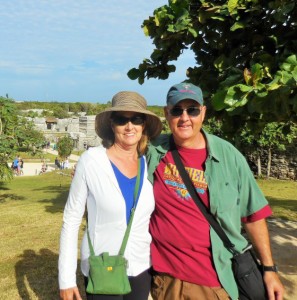
Day 2 in Paa Mal saw many in the group take a collectivo to a beach further south where they could swim with turtles and rays in the sea grass. Lisa and I headed to the beach at the park with Mike & Kelly, did some swimming and paddle boarding, the sun was out most of the time with some breeze. Day 3 we started with breakfast at the restaurant then we drove into Playa del Carmen. Eileen & Rafael met her Sister & Husband were had following for a vacation, the rest of the gang just walked about and took in the sites. Lisa and I had never been anywhere on this coast so all was new. We found a small local eatery a few blocks from the tourist zone, lots of Mexicans, not many locals, very reasonable, well under 200 pesos for the two of us. Day 4 in Paa Mal many of us headed to Tulum, the Mayan Archeological site on the Caribbean, one of what is referred to as the “Big 4” (Uxmal, Chichen Itza, Tulum and Palenque). Although the site was very scenic and manicured (it seemed like a golf course) I was underwhelmed in general. Good news was no merchants on the site itself and I did find a bumper sticker thanks to Mike. Back to the RV Park for some sun, swimming and fun.

This morning we departed southbound for Ciudad Chetumal, still on the Caribbean, but with a lot less tourists. The road was wonderful, good pavement and plenty wide, lots of 4 lanes. The campground is right on the water, we had a happy hour, then dinner. I was able to catch up on lots of WiFi. Tomorrow with help from all the Baja Amigos, we will get the SUP and Kayak off the Van and into the water.
Did you know?
Tourism in Mexico is enormous and has been traditionally among the most visited countries in the world according to the World Tourism Organization and it is the second most visited country in the Americas, after the United States. The most notable attractions are the Meso-American ruins, cultural festivals, colonial cities, nature reserves and the beach resorts. The nation’s temperate climate and unique culture – a fusion of the European and the Meso-American – make Mexico an attractive destination. The peak tourism seasons in the country are during December and the mid-Summer, with brief surges during the week before Easter and Spring break, when many of the beach resort sites become popular destinations for college students from the United States.

The majority of tourists come to Mexico from the United States and Canada. Other visitors come from Europe and Asia. A small number of tourists also come from other Latin American countries. There is also a burgeoning domestic tourism trade as a growing affluent middle class begins to go on holiday within their own country. While Mexico’s middle to lower class usually promotes national tourism, the middle to higher class usually prefers to travel overseas.
Tourism industry competitiveness
In the 2011 Travel and Tourism Competitiveness Index (TTCI) report, which is a measurement of the factors that make it attractive to developing business in the travel and tourism industry of individual countries, Mexico was ranked 43rd place in the world’s ranking, which is fourth in the Americas. In considering simply the sub-index measuring human, cultural, and natural resources, Mexico ranks in the 13th place on a worldwide level, 10th for the natural resources criteria and 19th for the cultural criteria. The TTCI report also notes Mexico’s main weaknesses, which includes ground transport infrastructure (ranked 79th), insufficient health and hygiene (ranked 64th) and safety and security concerns (ranked 128th).
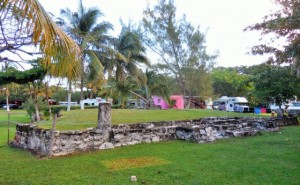
Statistics
Most visitors arriving to Mexico by air for tourism in 2014 came from the following countries:
Rank Country Number
1 United States 7,164,374
2 Canada 1,676,681
3 United Kingdom 458,932
4 Colombia 328,213
5 Spain 310,123
6 Brazil 309,696
7 Argentina 246,404
8 France 213,863
9 Germany 207,031
10 Venezuela 176,535
City destinations
Mexico City is the capital of Mexico and is popular with tourists as an ancient Meso-American city. It is the departure point for visits to the ancient city of Teotihuacan, famous for the Pyramid of the Sun and the Pyramid of the Moon. Other human-made tourist zones, such as the La Zona Rosa or Shopping District and El Zócalo (one of the largest public plazas in the world) are here. The city is also home to the Plaza de toros México – the world’s largest bullring – and to the Mexican National Palace, built on the site of Montezuma’s palace, and the huge Metropolitan Cathedral, the largest in the Western Hemisphere, built over the even greater Temple of Teocalli. Mexico City features the notable National Museum of Anthropology and History.
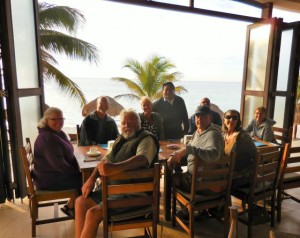
Guadalajara, Jalisco, the second-largest city by population in the Republic, is home of some of Mexico’s best known traditions, such as tequila, mariachi music and charros, or Mexican cowboys. Its similitude with western European countries mixed with modern architecture and infrastructure makes Guadalajara very attractive to tourists. Along with Mexico City and beach destinations (Cancun, Acapulco, etc.), Guadalajara is one of the most visited cities in Mexico. Cultural tourism is the main attraction, the city being home to a large number of museums, art galleries and theatres. The city is also the host of several internationally renowned events, such as the Guadalajara International Book Fair which is the most important exposition of its kind in the Spanish-speaking world, and the second largest book fair in the world. The city is known as a pioneer in the underground arts scene as well as in the electronic music world, another main touristic attraction. Its diversity of European architectural styles is a focus of attraction for tourists, in particular the Metropolitan Cathedral, the Degollado Theatre and the Hospicio Cabañas which is a World Heritage Site and one of the oldest hospital complexes in Spanish America. Other tourism activities include shopping at its world class shopping malls, or plazas, taking a tour to the surrounding areas such as the Huentitan Canyon, Tonalá, Tlaquepaque, Chapala or visiting nearby towns, which are well-connected by modern highways, such as Tequila, Puerto Vallarta or Mazamitla, depending upon whether visitors seek urban, coastal or rural getaways.

Monterrey, Nuevo Leon, was founded in the late 16th century. The downtown district is the oldest section in the city, surrounded by newer neighbourhoods. The Museo de Historia Mexicana (Museum of Mexican History), MARCO (Monterrey Museum of Contemporary Art), Metropolitan Museum of Monterrey and the Museum of the Palacio de Gobierno, or State House, are some of the better known museums in the city, as well as nationally. The Santa Lucia Riverwalk is a river walk similar to the one in San Antonio, Texas, having a length of 2.5 km (1.6 mi) and connecting the Fundidora Park with the Macroplaza, one of the largest plazas in the world.
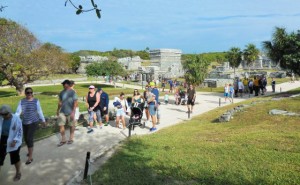
Morelia, Michoacán is the Capital of the State of Michoacán. Its Historic Downtown Area (Centro Histórico) encompasses approximately 150 city blocks in the city centre, roughly corresponding to the actual area of the city at the end of the 18th century. The Centro Historico contains over 1,000 historical sites, including (but not limited to) the cathedral and the aqueduct.
Other cities known for tourism (listed alphabetically) include:
• Chihuahua, Chihuahua
• Cabo San Lucas, Baja California Sur
• Dolores Hidalgo, Guanajuato
• Durango, Durango
• Guanajuato, Guanajuato
• Oaxaca, Oaxaca
• Puebla, Puebla
• León, Guanajuato
• San Cristóbal de las Casas, Chiapas
• San Miguel de Allende, Guanajuato
• Santiago de Querétaro, Querétaro
• Zacatecas, Zacatecas
Beaches
• Acapulco Bay, Guerrero
• Acapulco, Guerrero
• Cabo San Lucas, Baja California Sur
• Cancún, Quintana Roo
• Ensenada, Baja California
• Guaymas, Sonora
• Puerto Peñasco, Sonora (Also Called Rocky Point)
• Huatulco, Oaxaca
• Ixtapa, Guerrero
• Manzanillo, Colima
• Mazatlán, Sinaloa
• Mazunte, Oaxaca
• Playa del Carmen, Quintana Roo
• Puerto Escondido, Oaxaca
• Puerto Vallarta, Jalisco
• San José del Cabo, Baja California Sur
• Progreso, Yucatan
• Zipolite, Oaxaca
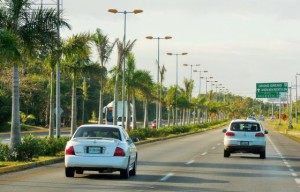
The coastlines of Mexico harbor many stretches of beaches that are frequented by sun bathers and other visitors. On the Yucatán peninsula, one of the most popular beach destinations is the resort town of Cancún, especially among university students during spring break. Just offshore is the beach island of Isla Mujeres, and to the east is the Isla Holbox. To the south of Cancun is the coastal strip called Riviera Maya which includes the beach town of Playa del Carmen and the ecological parks of Xcaret and Xel-Há. A day trip to the south of Cancún is the historic port of Tulum. In addition to its beaches, the town of Tulum is notable for its cliff-side Mayan ruins.
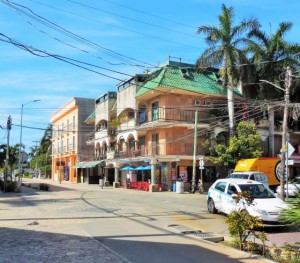
On the Pacific coast is the notable tourist destination of Acapulco. Once the destination for the rich and famous, the beaches have become crowded and the shores are now home to many multi-story hotels and vendors. Acapulco is home to renowned cliff divers: trained divers who leap from the side of a vertical cliff into the surf below.
Along the coast to the south of Acapulco are the surfing beaches of Puerto Escondido, the snorkeling, harbor beach of Puerto Ángel, and the naturist beaches of Zipolite. To the north of Acapulco is the resort town of Ixtapa and the neighboring fishing town of Zihuatanejo. Further to the north are the wild and rugged surfing beaches of the Michoacán coast. Along the central and north Pacific coast, the biggest draws are beaches of Mazatlán city and the resort town of Puerto Vallarta. Less frequented is the sheltered cove of Bahía de Navidad, the beach towns of Bahía Kino, and the black sands of Cuyutlán. San Carlos, home of the Playa los Algodones (Cotton Beach), is a winter draw, especially for retirees.
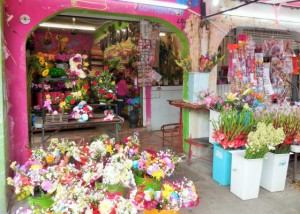
At the southern tip of the Baja California peninsula is the resort town of Cabo San Lucas, a town noted for its beaches and marlin fishing. Further north along the Gulf of California is the Bahía de La Concepción near Mulege, another beach town known for its sports fishing. Closer to the United States border is the weekend draw of San Felipe, Baja California.
History
More than 3,000 years ago, the first civilization in Mesoamerica blossomed on a fertile land south of the Gulf of Mexico. There, the Olmecs pioneered a civil, military and religious organization that would spread, after evolving, to young cultures in Mesoamerica. The Maya, Purepechas, Huastecos and Aztecs among others, formed local empires whose vestiges can be traced in Uxmal, Tzinzunzan, Tajin and the Main Temple in Mexico City. Their stunning ancient cities were part of a commercial and religious system with staggering, though partial, development in science.
Mesoamerican ruins
• Malinalco
• Chichen-Itzá
• Tulum
• Monte Albán
• Calakmul and Edzná
• Palenque
• Xochicalco
• Teotihuacan
• El Tajín
• Uxmal
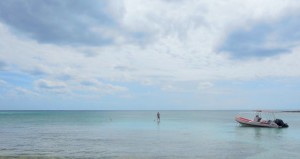
As the central and southern parts of Mexico was host to several pre-Hispanic civilizations, the most prominent being the Aztec, Mayan, and the Olmec. There are numerous tourist destinations where these ruins can be viewed. The Yucatán peninsula was home to the Mayan people, and many of the indigenous people still speak the language. The area also contains many sites where ruins of the Maya civilization can be visited. The richest of these are located in the eastern half of the peninsula and are collectively known as La Ruta Puuc (or La Ruta Maya). The largest of the Ruta Puuc sites is Uxmal, which was abandoned in the 12th century.

A one-hour drive to the northeast of Ruta Puuc are the surviving remains of the city of Mayapán. This settlement was controlled by Chichén Itzá to the east, now a large archaeological site with many interesting ruins. Other ruins on the peninsula include the aforementioned Tulum on the east coast, Cobá to the northwest of Tulum, Polé (now Xcaret) just south of Playa del Carmen and Calakmul in the nature reserve along the Guatemala border. However this list by no means exhausts the number of archaeological sites to be found in this area. To the west, the state of Chiapas includes the temples and ruins of Palenque, the glyphs of the city of Yaxchilán, the painted walls of nearby Bonampak, and the remains of the fortress of Toniná. In the city of Villahermosa to the north is the Parque-Museo La Venta, with a collection of Olmec sculptures.
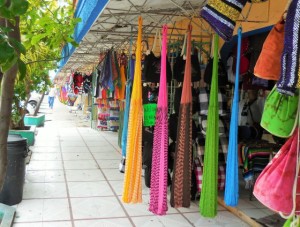
Along the gulf coast area in the state of Veracruz are more archaeological sites, with the Olmec ceremonial center of Tres Zapotes, the ruins of the large Totonac city of Zempoala, and the ruins of El Tajín with the Pyramid of the Niches. The city of Xalapa contains the Museo de Antropología, a notable museum featuring a collection of massive Olmec head sculptures. In the state of Oaxaca along the Pacific coast are the ruins of Mitla, known as the “City of Death” and of Monte Albán, the remains of the once extensive Zapotec capital and religious center. Moving to the north, the central region around Mexico City contains several archaeological sites. To the southwest are the massive ruins of Teotihuacán, including the Pyramid of the Sun and the Temple of Quetzalcoatl. To the southeast near the city of Cholula is the Great Pyramid, visible from the city center. Just to the north of Cholula are the well-preserved ruins of the city of Cacaxtla. Last but not least is the Toltec capital of Tula, to the north of Mexico City. In the capital itself, is the largest museum in Mexico, the Museo Nacional de Antropología. Finally, less visited than the major sites are the mysterious ruins of La Quemada, sometimes referred to as Chicomostoc, located south of Zacatecas, Zacatecas in the northern half of Mexico.
Spanish colonial history
Aguascalientes, Aguascalientes. Famous for its world-renowned festival San Marcos Fair during which it attracts 7 million tourists. This colonial City has gained prestige and status as a national destination for its colonial beauty, and absolute cleanliness. There are many amazing squares and gardens, surrounded by numerous buildings, from baroque churches to Porfirian mansions.
Campeche, Campeche. The only walled city in Mexico, is a World Heritage Site.
Cuernavaca, Morelos. Historic marvelous architecture, many times hidden behind tall walls, fortresses and monasteries, some UNESCO sites
Dolores Hidalgo, Guanajuato. The most important historical city of the country where the Mexican Independence War from Spain began.
Durango, Durango. The most important northern colonial capital city in Mexico. Dubbed the Pearl of the Guadiana Valley, has many colonial Mansions, one of these is the Count of Suchil Palace.
Guanajuato, Guanajuato. It’s a wonderful colonial treasure. This was the second most important city of the Viceroyalty of the New Spain. The whole town is a World Heritage Site.
Mérida, Yucatán. Dubbed the white city, with Mayan tradition has many colonial Mansions of impressive beauty.
Mexico City. The City of Palaces as Alexander von Humboldt called it. It has been the capital of the country for almost 700 years. Since the foundation of the Aztec Empire until nowadays.
Morelia, Michoacán. Excellent colonial architecture can be admired in this city.
Oaxaca, Oaxaca. Colonial Architecture and Indigenous tradition are mixed here.
Puebla, Puebla. The city of colorful tiles and Grand architecture, its historic center is a World Heritage Site
Querétaro. The state capital has a beautiful baroque downtown, declared a World Heritage Site. Other popular destinations include the third tallest monolith in the world (Peña de Bernal), a city famous for its thermal springs in the middle of a wine and cheese making area (Tequisquiapan), and astonishing natural and cultural beauties in the biosphere reserve of Sierra Gorda.
San Luis Potosí, San Luis Potosí. Rich in ancient times from its mines, this colonial city was the capital of Mexico twice.
San Miguel de Allende, Guanajuato. One of Mexico’s oldest towns. Many historic churches and the open-air Plaza Allende. An exceptional beauty Gothic Cathedral is located here.
Sombrerete, Zacatecas. Colonial town, it is famous for the historic churches and the colonial architecture.
Taxco, Guerrero. Known for silver jewelry there is a very famous baroque church is located here, its interior is the most admired since the baroque ornamentations are all covered in gold.
Tlaxcala, Tlaxcala. Four centuries without change are present in this city, famous for its Arabic mudejar open air chapel, next to the cathedral.
Veracruz, Veracruz. The first City Hall in the Americas was settled here.
Zacatecas, Zacatecas. The city downtown is a UNESCO World Heritage Site. It is famous for the astonishing pink facade of its cathedral, it is baroque in style, and exuberant in its ornamentation. The city is a delight for the national tourism.
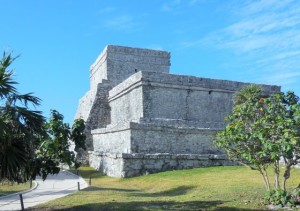
Ecotourism
• El Rosario – in the last two months of the year, a mass migration of monarch butterflies reaches the El Rosario sanctuary near Zitácuaro, Michoacán.
• Sonora Desert
• Barranca del Cobre
• Cascada de Texolo
• Durango
• El Nevado
• Isla Mujeres
• Pinacate Peaks
• La Bufadora
• Reserva de la Biosfera El Cielo
• Sian Ka’an
• Gulf of California (Sea of Cortez)
• Parque Nacional Sierra de Organos (Sombrerete, Zacatecas)
• Parque Nacional Sierra San Pedro Mártir
• Real de Catorce
• Tzararecuita
General tourism
• The island of Cozumel, Quintana Roo
• Monterrey, Nuevo León
• Nuevo Laredo, Tamaulipas
• León, Guanajuato
• Guadalajara, Jalisco – and nearby Lake Chapala
• Papantla, Veracruz – vanilla
• Piedras Negras, Coahuila
• San Cristóbal de las Casas, Chiapas
• San Luis Potosí, San Luis Potosí
• Saltillo, Coahuila
• Tequila, Jalisco
• Tijuana, Baja California
• Torreón, Coahuila
• Puerto Vallarta festival
• San Sebastián del Oeste, Jalisco
• Zipolite, and Mazunte, Oaxaca
Architecture
Having one of the highest number of UNESCO World Heritage Sites in the world is a privilege not many countries can boast. Beginning more than 2,000 years ago, Mexico’s architectural heritage is a melting pot, mixing Pre-Hispanic influences, colonial style –with its own blend of Moorish, Jewish and Castilian traits–, 19th century architectural trends such as Neoclassicism, Art-Deco and Art Nouveau, and Avant-garde designs from the brilliant Teodoro Gonzalez de Leon, Pedro Ramirez Vazquez and Luis Barragan.
Arts and Crafts
As a republic, you could say Mexico is very young, but our traditions and culture have a long and winding history. Aztec frescoes give us a glimpse of social and religious life and the Aztecs’ fascinating cosmology. Portraits and religious paintings from Miguel Cabrera reflect character of New Spain, and the Neoclassical school in the late 19th century distills an obviously European scent. Yet the Mexican revolution brought with it an urgent need to develop an authentic Mexican identity based on local models and traditions.
Gastronomy
Mexico is famed for its gastronomy. But beyond the tacos and guacamole of world renown, there are rich and various culinary traditions spanning the whole country. The tastes, smells and textures of traditional Mexican ingredients are an assault on the senses, especially the more exotic items such as maguey worms, ants and fried grasshoppers. But the subtle blend of flavors in dishes such as mole and traditional Mexican salsas are sure to delight the palates of even the most conservative diners.
Museums
Mexico City is the city with the most museums in the whole world. According to the National Council for Culture and Arts (Conaculta), in early 2010 there were over 1,121 museums all over the country. All across the country there is a whole range of thematic museums that will certainly interest you and offer you a vision of the past and present of our history. In Mexico City alone there are 141 buildings registered by Conaculta, where you can learn about its cultural, social, political and economic heritage.
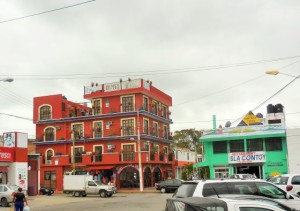
Traditions and Festivities
Since Aztecs times, religious festivities have been a major part of Mexican life. Catholicism found a fertile land here and an interesting –and sometimes impossible to understand- syncretism became the quintessence of Mexican national identity. You’ll be surprised, on looking closer at Mexico’s carnivals, to find very conservative people dancing to please or to ask favors from the Pre-Hispanic gods masked behind catholic saints. If exploring those traditions is your kind of thing, Tlaxcala and Tepoztlan are a must for your trip.
